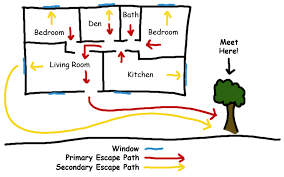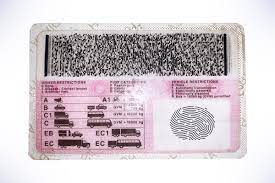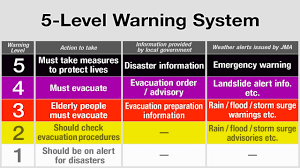Overview of the key steps to stay safe in a disaster zone
The most important thing in a civil unrest situation is to stay informed. If you are not aware of things happening in your area/town/country, you cannot be prepared. Keep up to date with the happenings in your area so that you can prepare, and stay prepared.
Civil Unrest

At the time of writing this article, there was a municipal strike in Tshwane. That being the case, I do not travel through town or in any areas where the municipal workers could be gathering or protesting. Nor do I go to the area where residents could be protesting because of poor service delivery.
What about our children going to and from school? Busses, trucks and other vehicles are being targeted by the municipal workers so how safe are our children going to school by bus or other public transport? Would it be necessary to transport our children ourselves or should they be kept at home?
Have you arranged a safe pick-up point for your children if the strike affects their school area? where should they wait for you or where is a safer place to shelter in the event of hooligans trespassing/causing trouble on the school grounds?
Civil Unrest/Flood/Fire/Escom Grid Collapse
Most, or should I say all areas have the possibility of one of these scenarios occurring. If it does happen, have you planned for such an event? If you cannot get to the school, who collects your children and where are they to be taken? What about your family members, such as your parents?
So everyone is taken care of, so now where are your Bug-out-Bags and other emergency rations and equipment? Who is going to collect them and where will you meet up? Remember, each situation could require a different solution.
Understanding Your Local Risks
Identifying Common Natural Disasters In Your Area
The entire South Africa is at risk of Civil Unrest and Escom Grid Collapse but each area could have its own additional risks. Things such as:-

- Fire hazard if surrounded by forest
- Flood if it is below a dam
- Roadside attacks by criminals like Zama Zamas and hijackers
- Farm Attacks and home invasions
Researching Historical Civil Unrest/Disaster Occurrences
If you are new to an area, it would be advisable to research historical disasters so that you are aware of them and you can create contingency plans for any of the disastrous events that could occur in your area.
Consulting Local Authorities And Resources
A good idea is to find out what your local authority has planned for any such event and see how you can make use of those plans and facilities.
Creating an Emergency Plan
1. Communication strategies – In case of a serious disaster, there will probably be no communication via cell phone. Although most towers had battery support, those whose batteries have not been stolen will only be operational for a few hours.
2. Evacuation routes – It is important to have a planned evacuation route for work, home and school, just inase you need one. This is advisable even if you plan to bug in at home. Circumstances tend to be very fluid and unpredictable in such circumstances. For in-depth advice, see this article.
Staying Informed About Civil Unrest

There are now many WhatsApp, Facebook and Telegram groups about the groups in South Africa and they will probably all try to get the message out when SHTF. The Problem is, how long will they all stay online? If the Escom Grid goes down, there will be very limited communications.
Many Groups have turned to the Radio option, even setting up repeaters, but these too will only last as long as there is power.
It will be imperative to have a plan on what to do if there are no comms or if the power is down for 3 hours over a large area. For example, if the power is out country-wide or province-wide for 3 hours then everyone meets at **** point. You can then assess the situation and decide on what is the next step going to be.
Navigating a civil war zone is an immensely challenging and perilous endeavour, requiring a combination of preparation, strategic thinking, and quick decision-making. Here are comprehensive guidelines on how to stay safe in a civil war zone:
- Stay Informed
Regularly monitor reliable news sources to stay updated on the current situation.
Utilize official travel advisories and research to understand the areas more prone to unrest. - Create a Safety Kit
Invest in essential gear, including a flashlight, small radio, extra batteries, and basic outdoor survival tools like a multi-tool or survival knife. - Plan for Shelter
Identify safe havens and potential shelters where you can seek assistance if necessary.
Prepare a safe room in your residence with provisions for food, water, and power sources. - Avoid Demonstrations and Crowds
Steer clear of protests, demonstrations, and large crowds as these can quickly turn violent. - Gunfire Safety
In case of gunfire, drop to the ground, cover your head and neck, and lie as flat as possible. - Blend In
Dress inconspicuously to avoid standing out. Adapting to local attire can reduce the risk of becoming a target. - Communication Strategy
Establish a communication plan with family and friends. Designate a contact person outside the conflict zone as a central point for updates[ - Evacuation Routes
Identify multiple evacuation routes and stay familiar with the local geography. - Minimize Blast Injuries
In the event of explosions, close your eyes, cover your ears, and open your mouth to minimize blast injuries. After the explosion, evacuate quickly, watching for weakened structures. - Network with Locals
Build positive relationships with locals to gain insights into safe areas and potential risks. - Accommodation Safety
Choose accommodations wisely, opting for secure lodgings in less volatile areas. - Power Sources and Vehicle Readiness
Keep your vehicle ready and maintain power sources to ensure mobility. - Financial Preparedness
Ensure you have enough money, food, and water for an extended shelter-in-place situation. - Stay Low During Gunfire
Drop to the ground and stay low during gunfire to minimize exposure and risk. - Social Media Caution
Exercise caution on social media, avoiding sharing specific location information that could jeopardize your safety.
In conclusion, surviving in a civil war zone demands a combination of situational awareness, preparation, and adaptability. Always prioritize personal safety, and be ready to adjust your plans based on the evolving circumstances. Seek guidance from official sources, trust your instincts, and take every precaution necessary to ensure your well-being in this challenging environment.
Medication and First-Aid Equipment
Collect Medications and First Aid Equipment

How to Prepare and Collect Medications and First Aid Equipment for Civil Unrest
Civil unrest can bring about uncertain and challenging situations where having a well-prepared first aid kit and necessary medications is crucial. Here’s a comprehensive guide on how to gather and prepare medications and first-aid equipment for such scenarios:
First Aid Kit Basics:
Assemble a basic first aid kit containing essentials like bandages, gauze, adhesive tape, antiseptic wipes, and scissors. This will serve as the foundation for more comprehensive preparations.
Medical Information:
Include a list of essential medical information, such as allergies, existing medical conditions, and emergency contacts. This information can be vital for healthcare providers in case of injuries during civil unrest.
Personal Medications:
Ensure an adequate supply of your regular medications. Consider having a 30-day reserve to cover unexpected disruptions in access to pharmacies or medical facilities.
Specialized Equipment:
If you have specific medical conditions, include any specialized equipment required, such as glucose monitoring devices or blood pressure monitors.
Packing List for Protestors:
Refer to specialized packing lists crafted for protestors, which often include additional items like wound care supplies, insect repellent, and sunblock [2].
Emergency First Aid Kit:
Create a separate first aid kit specifically for emergencies, focusing on items tailored for injuries that may occur during civil unrest.
Prescribed Medications:
If you have prescribed medications, ensure an ample supply and consider consulting with your healthcare provider on emergency protocols.
Additional Supplies:
Don’t forget everyday essentials like water, snacks, a change of clothes, a bike helmet, and toiletries. These items can contribute to overall preparedness during unpredictable events.
By diligently preparing a well-rounded first aid kit and ensuring an adequate supply of medications, you can better navigate the challenges posed by civil unrest, prioritizing your health and well-being. Remember to stay informed about the specific needs of your health condition and adapt your preparations accordingly.
Important Documents and Contact Information

In preparation for emergencies, organising crucial documents and contact information is paramount. Begin by creating a comprehensive list of essential documents such as:-
1. Identification documents such as driver’s licenses and passports. These documents should be stored securely in a lockable, fireproof file box. It would be a good call to digitise by scanning and creating electronic copies.
2. Medical Records. These are especially important for those with chronic conditions
3. Property Deeds. These will be important in a situation where things calm down and you find that your home has been occupied by someone else. This is true for all “Proof of ownership documents”.
Evacuation Preparedness: A Crucial Aspect of Emergency Planning
Evacuation preparedness is a critical component of comprehensive emergency planning, ensuring the safety and well-being of individuals in the face of natural disasters or unforeseen crises. Authorities emphasize the importance of following specific guidelines during evacuations to maximize effectiveness and minimize risks.
Before evacuation becomes necessary, individuals are advised to lock all windows and doors, unplug appliances and electrical equipment, and communicate with neighbours to offer and seek assistance if needed.
Being prepared involves having a well-thought-out emergency evacuation plan, which should include a clear route to safety, designated meeting points, and communication strategies.
The evacuation process demands swift action, making it crucial for individuals to have a disaster supplies kit readily available. This kit should contain essentials such as first aid supplies, important documents, and necessities for all family members, including pets.
Staying informed about evacuation procedures, including local authorities’ directions and updates, is paramount for making informed decisions during high-stress situations. Additionally, ongoing education on evacuation strategies, as outlined by authoritative sources like the Occupational Safety and Health Administration, ensures that individuals and communities are well-prepared to navigate the challenges of evacuation with resilience and efficiency. Evacuation preparedness is not just a set of instructions but a proactive approach to safeguarding lives and minimizing the impact of emergencies on communities.
Recognizing evacuation orders

During times of civil unrest, recognizing and heeding evacuation orders is crucial for personal safety. Evacuation orders can be issued for various reasons, including civil disturbances, violence, or potential harm to individuals in a specific area. Understanding the sources of such orders is essential – local authorities, government announcements, or law enforcement may communicate them through official channels, including social media, emergency broadcasts, or community alerts. It’s vital to stay informed and regularly check reliable news sources for updates on the situation and official evacuation directives.
In the context of civil unrest, evacuation orders may be triggered by factors such as protests, riots, or escalated tensions. Local authorities might declare curfews or request residents to evacuate to safer locations. Paying attention to these signals and complying with evacuation directives helps individuals navigate through challenging circumstances. Being aware of the reasons behind evacuation orders and staying connected to official communication channels ensures a swift and informed response, contributing to personal safety and the overall well-being of the community.
Sheltering in Place: Weighing the Pros and Cons
Sheltering in place is a strategy employed during emergencies to seek refuge within one’s home or designated safe space. This approach, while effective in certain scenarios, comes with its own set of advantages and drawbacks.
Pros:
- Cost-Effective: Sheltering in place is often more economical compared to large-scale evacuations, minimizing financial burdens on individuals and communities.
- Avoiding Contaminated Areas: It allows individuals to stay clear of potentially hazardous environments, protecting them from contamination or external threats.
- Maintaining Familiarity: Sheltering in place preserves the comfort and familiarity of one’s home, reducing stress and anxiety during challenging situations.
Cons:
- Limited Resources: Depending solely on available resources at home may lead to shortages during prolonged emergencies, posing challenges for sustenance.
- Isolation: Extended periods of isolation can have psychological impacts, affecting mental well-being due to limited social interaction.
- Dependence on Home Safety: Sheltering in place assumes that the home environment is secure, but structural vulnerabilities or unforeseen circumstances may compromise safety [3].
Understanding these pros and cons is essential for individuals and communities to make informed decisions about the appropriateness of sheltering in place in different emergency scenarios.
Safety During and After a Disaster

Ensuring safety during and after a disaster is crucial for individuals and communities to minimize risks and facilitate recovery. During a disaster, adherence to safety guidelines is paramount. Staying informed by following the directives of local officials, having a well-prepared disaster supplies kit, and promptly securing living spaces contribute to immediate safety. In the case of specific disasters like earthquakes, adopting protective measures such as dropping down onto hands and knees can significantly reduce the risk of injury.
Post-disaster safety involves cautious actions to avoid additional harm. Safeguarding against potential dangers, like gas leaks or damaged structures, is vital. Resist the urge to check on property until authorities confirm it’s safe, preventing unnecessary exposure to risks. Additionally, taking precautions against common post-disaster challenges, like contaminated water sources, supports long-term well-being. By integrating these safety measures into disaster preparedness plans, individuals can navigate crises with resilience and protect both themselves and their communities.
Taking Care of Your Psychological Well-being
Maintaining psychological well-being is essential for overall health and happiness. Connecting with others is a fundamental aspect; nurturing positive relationships provides emotional support and combats feelings of isolation, contributing significantly to mental well-being.

Regular physical activity is not only beneficial for physical health but also plays a crucial role in improving mood and reducing stress, positively impacting psychological well-being.
Forgiveness is a powerful tool to enhance psychological well-being by releasing negative emotions and promoting resilience.
Engaging in relaxation practices, such as mindfulness or meditation, aids in stress reduction and promotes a calm mental state.
Additionally, maintaining a gratitude journal and recognizing daily achievements contribute positively to mental health, fostering a sense of accomplishment and positivity.
Integrating these practices into daily life forms a holistic approach to psychological well-being, nurturing a resilient and balanced mind.
Conclusion
Keeping safe can be nerve-racking and overwhelming. Planning and practising the plans is something that will be of great benefit if your civil unrest situation were to occur. Knowing your plan will help your effectiveness in such a stressful situation. Below is a couple of articles that might help
1. Assembling An Emergency Kit(BoB)

“It is better to have prepared and never to need it than to be unprepared and be in desperate need of it”.
Be Aware. Be Safe. Be Prepared!
